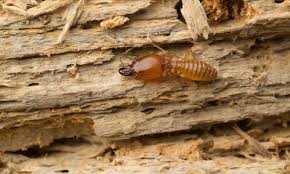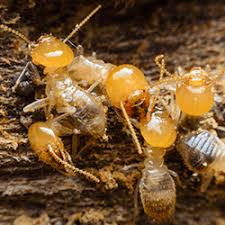The Main Principles Of Termite Control Review
This page describes the three kinds of the most common termite species that are found in infestations around Australia, subterranean, drywood and dampwood, and also termite.
Termites are categorized into three ecological categories according to their nesting and feeding habits: subterranean, drywood and dampwood.
Subterranean termites are the most common type of termite that are among the most damaging pests and infests wood in buildings. Outdoors they mainly infest wood in contact with the soil, such as stumps, fallen trees and branches. They prefer even though they can digest wood wood that has some amount of rot which makes it easier for them to digest it. .
Termite Control Review for Dummies
Subterranean termites will need to be to live, which makes their nests in or near where moisture can be easily acquired by them from the ground. They tunnel to get wood or moist soil and they float to achieve moisture. .
The termites use dirt as a material to build shelter tubes and nests, which can be composed of dirt, wood, faeces and saliva. Some species build carton nests above ground and build shelter tubes (also called sand tubes) to connect the nest into the ground.
Foraging is determined by the weather, with higher action in summer and minimal action in winter or dry conditions after rain. In tropical areas they could forage throughout the year, with peaks during warmer weather, wetter conditions.
The 4-Minute Rule for Termite Control Review
Drywood termites reside in tiny colonies less than 1000 people inside pieces of timber. There might be several tiny colonies like a piece of furniture within one piece of wood or object. They could feed across yearly rings as is subterranean termites, so the galleries don't follow the grain of wood, but they tend to steer clear of heartwood.

Colonies may grow for many years undetected until the timber breaks or the swarm. Before the population reaches a critical point the winged alates, that are may not be made for decades in a colony. Then they leave the nest to pair up and discover a site that is new to mate and start a new colony, usually not far from the parent colony. .
Wood that stays moist because of contact with the soil or through a water leak in a building is normally infested by dampwood termites. They are most likely to infest timber that's outside stump or logs in contact.

The Buzz on Termite Control Specialists
Termites live completely they feed and create large galleries. As with drywood termites, they can infest timber for years until they are discovered, which is most likely when the alates swarm from a colony. Swarming may occur with various species swarming at distinct times, over a few months.
They are an indication of a moisture problem if they are found in a building. They are minor pests and can be controlled in buildings by taking away Learn More the supply of moisture. In live trees they have a tendency to feed on dead and rotting wood.
Termite species can be tricky to identify, even to the specialists. Identification is usually based on the soldiers, which is the caste which has the most easily distinguishable features.
Of the species it is.
Some Known Facts About Termite Control Services In Adelaide.
The mind of the soldier is and yellowish with darker, smooth thin mandibles. Body is left up to 7 mm long. It is easily confused with two other native Coptotermes species, C. frenchi and C. lacteus (Victoria Museum)
The soldiers produce a white sticky liquid from an opening (fontanelle) on the front of head when defending the nest from attack.
Mounds are not typically built by species, but in Queensland and other regions of Australia. They largely nests in trees, poles, stumps, buried timber around homes under buildings and in walls. Favoured trees for nesting are oaks eucalypts and peppercorns. The colony is mostly located at the root crown or the part of their trunk.
The Single Strategy To Use For Termite Control Review
Although Mastotermes darwiniensis is the locally across its limited range in tropical Australia, coptotermes acinaciformis is the most destructive termite species in Australia overall. C. acinaciformis strikes all timber structures and obligations forest and ornamental trees as well as fruit trees.